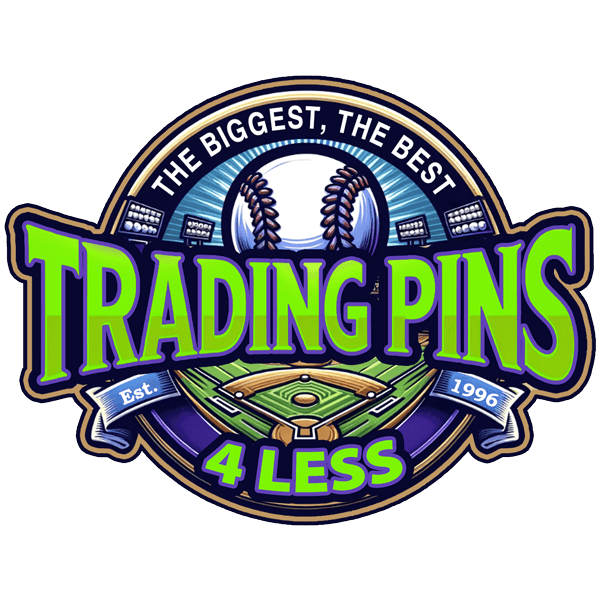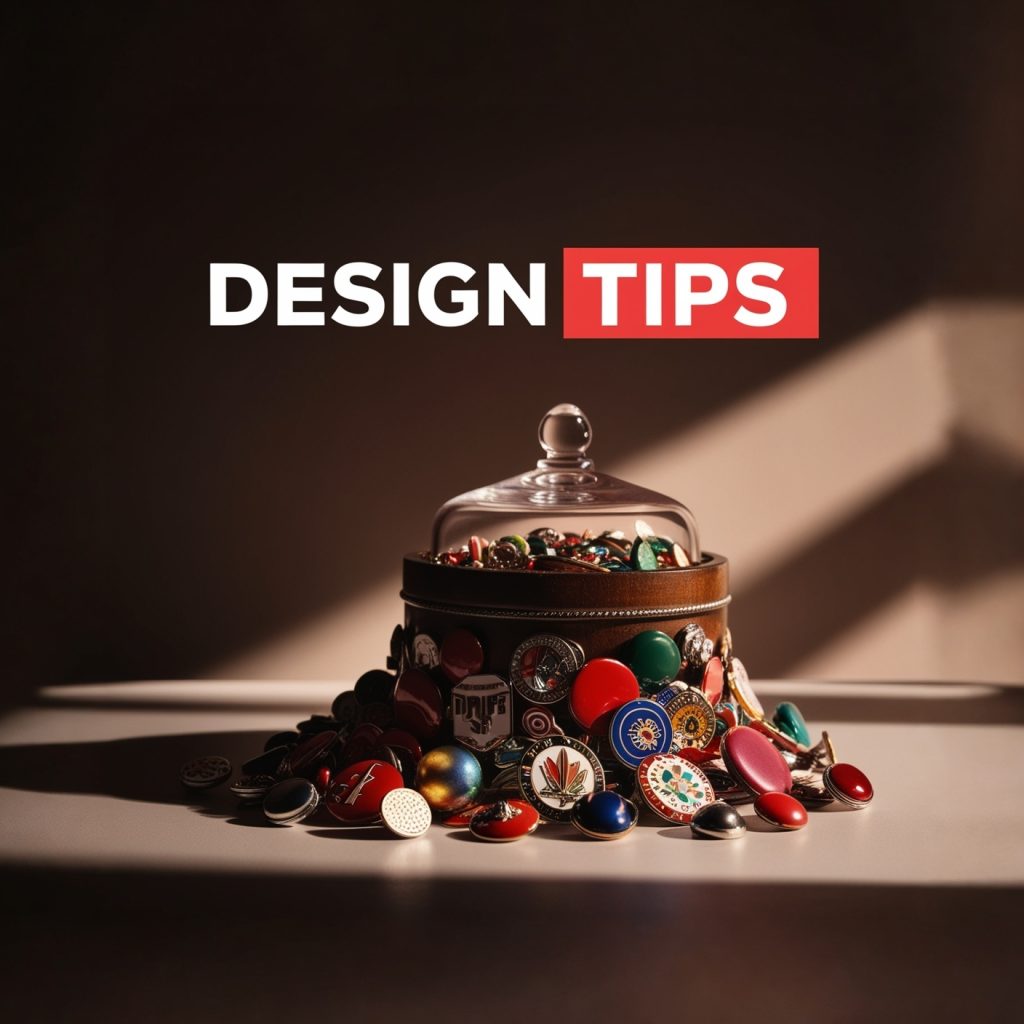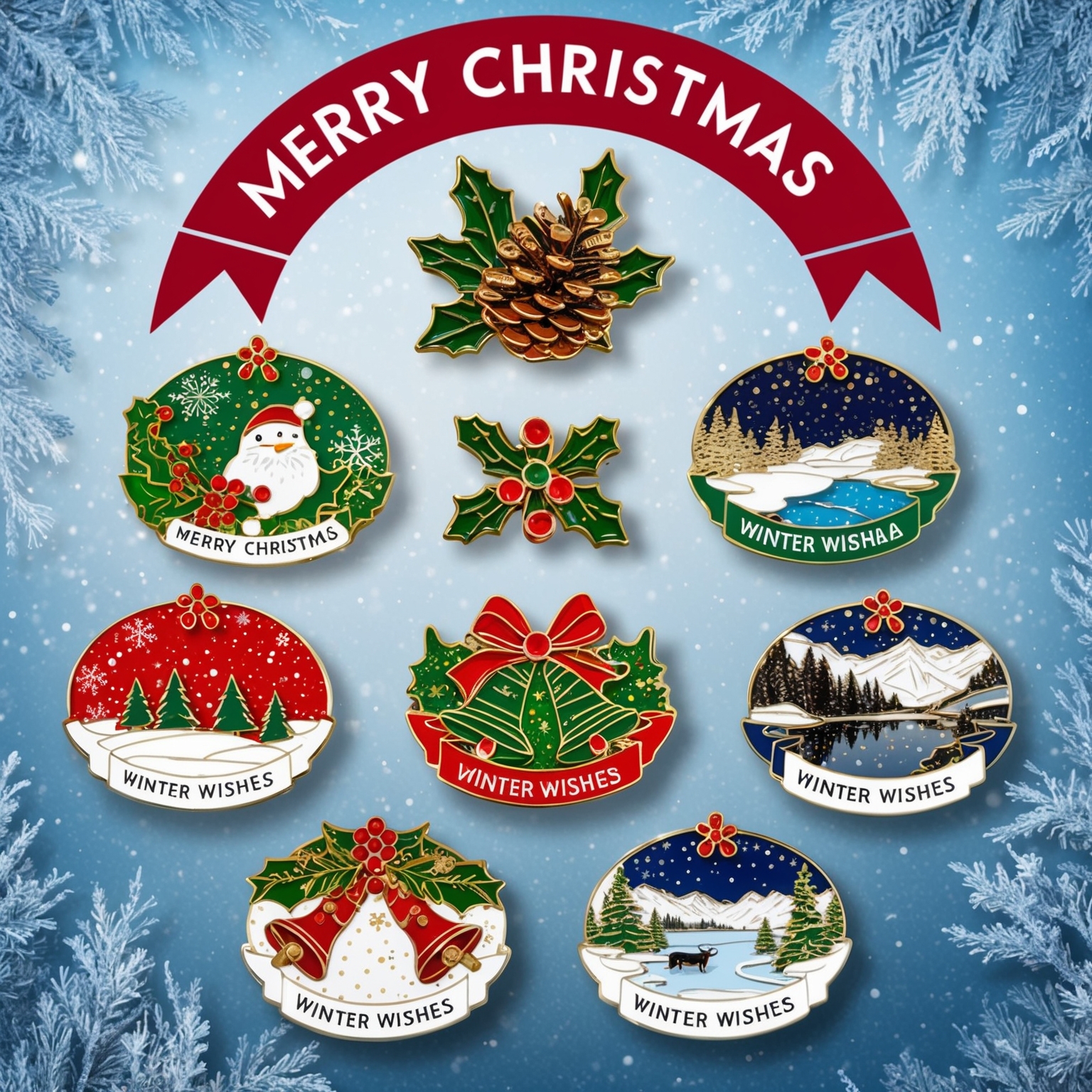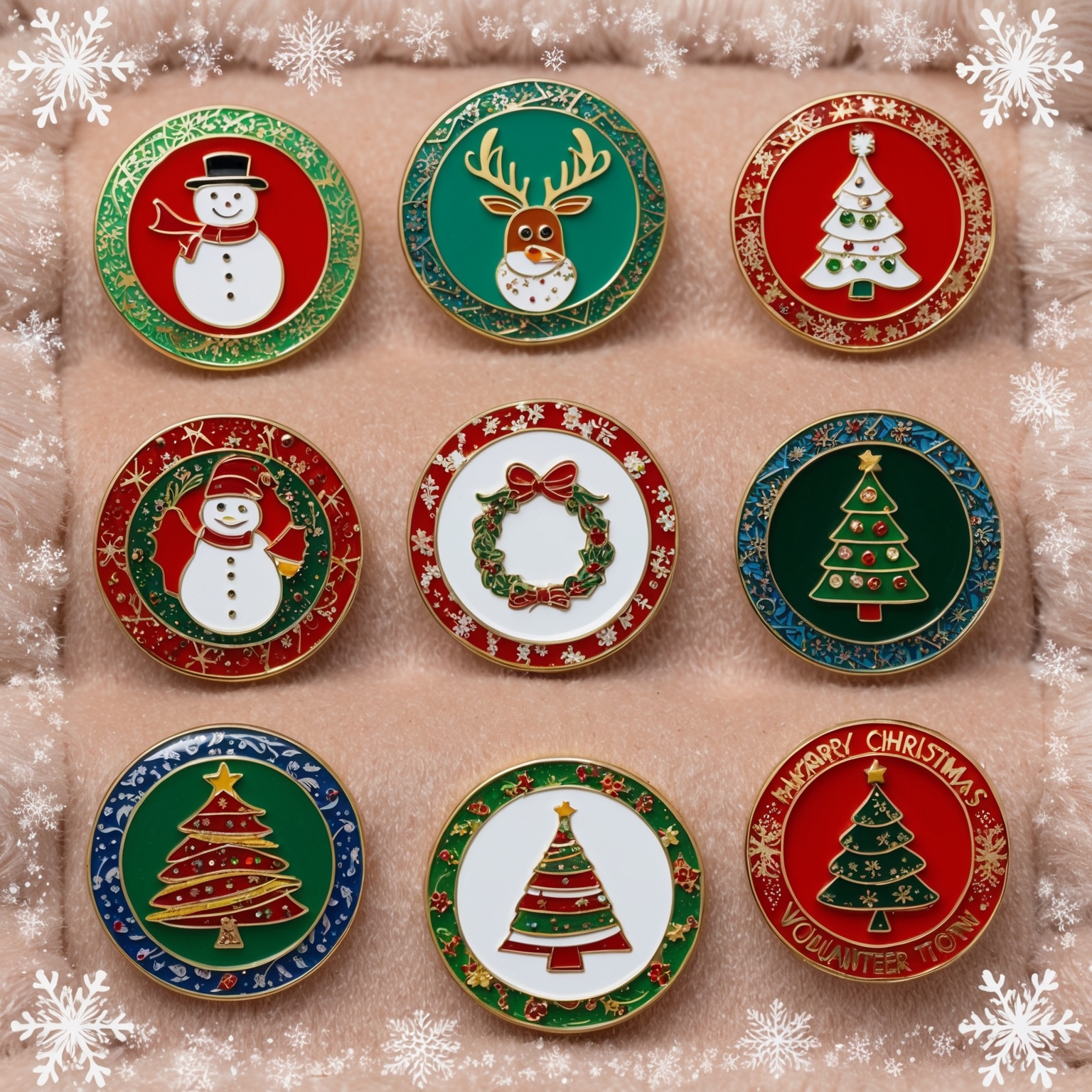Event trading pins have become an essential part of many types of gatherings, from youth sports tournaments to corporate events and pop culture conventions. These small, highly collectible items hold significant value as mementos, representations of pride, and symbols of camaraderie and shared experiences. Whether used to commemorate a specific event or to build team spirit, event trading pins are an effective and fun way to engage participants and create lasting memories.
However, not all event trading pins are created equal. The difference between a pin that people will cherish for years and one that is quickly forgotten lies in the design process. Crafting the perfect pin involves much more than slapping a logo on a piece of metal. Careful consideration must be given to the colors, materials, shapes, and special features to ensure the pins are not only visually appealing but also meaningful.
In this guide, we’ll delve into the world of custom trading pins and offer 10 expert tips to help you create custom pins that stand out and make a lasting impression. Whether you’re a coach, event organizer, or collector, these tips will ensure your next batch of pins is a huge hit.
1. Understand Your Audience and Purpose
Before diving into the design phase, it’s crucial to define the audience for your event trading pins and the event’s purpose. Understanding who the pins are for and the context in which they’ll be traded will guide the overall design and ensure that the pins resonate with their intended recipients.
Key Questions to Ask:
- Who will wear or trade these pins? Are you creating pins for children, teenagers, adults, or a mix of ages? Knowing your audience will help you decide on the style and tone of the design. For youth sports, for example, you might lean toward fun, colorful, and playful designs, while corporate event pins may require a more sophisticated, sleek appearance.
- What’s the purpose of the event? Are the pins meant to promote camaraderie at a team-based tournament, celebrate a milestone, or commemorate a special occasion? Pin designs that tie directly into the event’s purpose will have a deeper emotional impact on participants.
- What message do you want the pins to convey? Is the focus on team pride, brand promotion, or simply a keepsake for a one-time event? The message will influence the design elements you choose.
For example, pins designed for a youth soccer tournament may feature the team mascot or a fun cartoon design, while pins created for a corporate networking event may feature a company logo with a more professional aesthetic.
2. Keep the Design Simple but Impactful
One of the cardinal rules of designing custom event trading pins is simplicity. Pins are small, typically no larger than a couple of inches, so intricate details may not translate well when the design is miniaturized. A cluttered or overly complex design can make it hard for viewers to quickly grasp the key elements of the pin.
Tips for Creating Simple but Memorable Designs:
- Focus on Key Elements: Decide on one or two main elements that will be the focal point of the design. This could be the team logo, mascot, event name, or an important symbol representing the event. Avoid trying to cram too many details into the design.
- Limit Text: While it might be tempting to include a lot of information on the pin, too much text can be hard to read and distract from the overall design. Stick to essential details like the event name and date, and use clean, easy-to-read fonts.
- Bold, Clear Shapes: Simple, bold shapes stand out much more on a small pin than detailed illustrations. Consider using geometric shapes, outlines, or silhouettes for a cleaner look that translates well to the size constraints of a pin.
Simplicity is key in ensuring your pin is not only visually appealing but also easy to recognize from a distance. With clear lines and a minimalistic approach, you can create a design that’s immediately identifiable and impactful.
3. Choose the Right Shape
Traditionally, pins are circular, rectangular, or square, but one of the most effective ways to make your event trading pins stand out is by choosing a custom shape that reflects the theme or purpose of the event. Custom shapes are a fun way to add personality and make the pin feel unique to the event or team.
Ideas for Custom Pin Shapes:
- Logo or Mascot Shapes: If your event or organization has a recognizable logo or mascot, consider using that shape for the pin. For example, if you’re designing pins for a sports team, a pin in the shape of a baseball bat, soccer ball, or team mascot can add a unique touch.
- Event-Themed Shapes: If your event has a specific theme, such as a music festival or holiday celebration, design the pin in a shape that fits the theme, like a guitar, tree, or festive icon.
- Geometric Shapes: For a modern or sleek look, geometric shapes such as hexagons, stars, or triangles can give your pins a fresh and contemporary feel.
Custom shapes can elevate your design from ordinary to extraordinary. Just ensure that the shape aligns with the design and doesn’t obscure key details or make the pin harder to manufacture.
4. Pick the Perfect Colors
The right color palette can make a huge difference in how appealing your event trading pins are. Colors should not only complement each other but also match the mood and purpose of the event. Bright, bold colors often work best for fun and energetic events, while more muted tones can give a sophisticated and professional look.
Tips for Choosing Colors:
- Match the Event Theme: If the event has a specific color scheme, incorporate those colors into your pin design. For example, if you’re designing pins for a holiday event, use festive colors like red and green.
- Stick to a Limited Palette: While you might be tempted to use a wide range of colors, limiting your palette to two or three main colors will create a more cohesive and visually appealing design. This also helps reduce production costs.
- Use High-Contrast Colors: High contrast between colors, such as dark colors with bright accents or light backgrounds with bold text, ensures that the design elements stand out. This is especially important for pins that will be viewed from a distance.
Consider using Pantone color matching to ensure that your design’s colors are accurately reproduced during manufacturing. This ensures that your pins stay true to your original vision.
5. Include Event-Specific Details
To make your event trading pins more meaningful and collectible, be sure to incorporate details that are specific to the event itself. These details turn the pin into a commemorative item that attendees will want to hold onto for years to come.
Examples of Event-Specific Details:
- Event Name and Date: Include the name of the event and the year it’s taking place. This turns the pin into a lasting keepsake that participants can look back on to remember the event.
- Location: If the event is held in a specific city or venue, include an iconic landmark or the city’s name as part of the design.
- Special Achievements: For sports events, consider adding achievements such as “Champions” or “Finalists” to mark team accomplishments. This makes the pin feel more personalized and valued by the recipient.
These event-specific details transform your pins from general trading items into memorable souvenirs that hold special meaning for participants.
6. Don’t Forget About Text and Fonts
Text can be a crucial part of your event trading pins, but it’s important to ensure that the text is easy to read and doesn’t overwhelm the design. Choosing the right font style and size will make a big difference in the pin’s overall appeal and legibility.
Best Practices for Adding Text:
- Use Readable Fonts: Avoid overly decorative fonts that may be difficult to read, especially at small sizes. Instead, choose clean, bold fonts that are legible even from a distance.
- Keep It Short: Stick to essential information. Including the event name, year, and a short slogan or tagline is usually enough.
- Consider Font Size: The text should be large enough to read but not so large that it overshadows other design elements. Strike a balance between size and spacing.
Good typography can enhance the design and convey important information at a glance, making the pin both functional and stylish.
7. Add Special Features for Extra Appeal
Incorporating special features can take your event trading pins to the next level, adding unique elements that make the pins more fun to trade and collect. These special features also increase the perceived value of the pins, making them more desirable.
Popular Special Features:
- Spinners: Spinners are movable elements that can rotate on the pin, adding an interactive component. For sports pins, spinners can depict a rotating soccer ball or baseball.
- Sliders: Sliders are movable pieces that slide back and forth on the pin. They’re great for designs that want to illustrate motion, like a runner or car in motion.
- Danglers: Danglers are small, additional pins that hang from the main pin. They’re ideal for adding extra details, such as a tournament placement or a year marker.
- Glitter Enamel: Adding glitter to your pin’s enamel makes it sparkle and shine. Glitter is especially popular for pins representing festive events or kids’ sports teams.
- Glow-in-the-Dark Enamel: Glow-in-the-dark pins add a fun element, particularly for night events or concerts.
Special features make your pins more interactive and fun, increasing their trade value and collectibility.
8. Focus on High-Quality Materials and Craftsmanship
While design is important, the quality of materials and craftsmanship is equally critical. A pin that looks great but feels flimsy or breaks easily won’t leave a lasting positive impression. Choose durable, high-quality materials that can withstand wear and tear and keep your design looking sharp.
Considerations for Quality Pins:
- Metal Base: Choose a durable metal for the base of your pins, such as brass, iron, or zinc alloy. These materials are strong and hold up well over time.
- Enamel Type: Decide between hard enamel and soft enamel for your pins. Hard enamel gives a smooth, polished finish and is highly durable, while soft enamel offers a more textured, raised design. Both options are attractive but serve different aesthetic purposes.
- Backing Options: The backing of the pin is just as important as the front. Consider secure options like butterfly clutches, rubber backs, or magnetic backings to ensure the pins stay in place and don’t easily fall off.
By using high-quality materials, you ensure that your pins are not only attractive but also long-lasting, making them valuable collectibles for years to come.
9. Make It Collectible with Limited Editions
Creating limited-edition event trading pins adds an extra layer of excitement and exclusivity to your design. Limited-edition pins are highly sought after by collectors, as their rarity makes them more valuable and desirable.
Tips for Limited Edition Pins:
- Number the Pins: One way to emphasize the limited nature of the pins is to number them, such as “1 of 100.” This adds a sense of rarity and can make each pin feel special.
- Offer Special Variants: Consider offering different variants of the same pin design, such as one version with glitter or one with glow-in-the-dark enamel. Variants create additional levels of collectibility.
- Create Exclusive Pins for VIPs: Offer limited-edition pins to VIP guests or participants to create an extra layer of exclusivity. These pins can feature unique designs or special colors that aren’t available to the general public.
Limited-edition pins increase excitement around trading and create a sense of urgency among collectors who want to get their hands on rare designs.
10. Plan Ahead for Production and Delivery
Creating great event trading pins takes time, so it’s essential to plan well in advance of your event. Rushing the process can lead to mistakes, design errors, or delays in production, which could leave you without pins on the day of the event.
Key Steps for Planning:
- Set a Timeline: Work backward from your event date to set clear deadlines for each stage of the design and production process. Be sure to leave extra time for shipping and any unexpected delays.
- Order Samples: If possible, order samples of your pin design before placing a full order. This will allow you to see the design in person and make any necessary adjustments.
- Order Extra Pins: Always order more pins than you think you’ll need. Extra pins can be used for last-minute trades, gifts, or giveaways. They also ensure that you won’t run out during the event.
Planning ahead ensures that your pins are ready on time and meet your quality expectations, preventing any last-minute headaches.
Crafting Memorable Event Trading Pins
Designing event trading pins is both an art and a science. By following these 10 design tips, you can create pins that stand out from the crowd, resonate with your audience, and leave a lasting impression. From choosing the right colors and shapes to adding special features and focusing on quality materials, each decision you make during the design process contributes to the overall success of the pin.
Whether your goal is to create a fun and interactive collectible for a sports tournament, a sleek and professional pin for a corporate event, or a unique and limited-edition item for a fan convention, these tips will ensure that your event trading pins make a lasting impact on everyone who encounters them.
If you are interested in buying high quality custom trading pins, you can call us at 1-800-641-1299 or fill out a FREE quote form.







